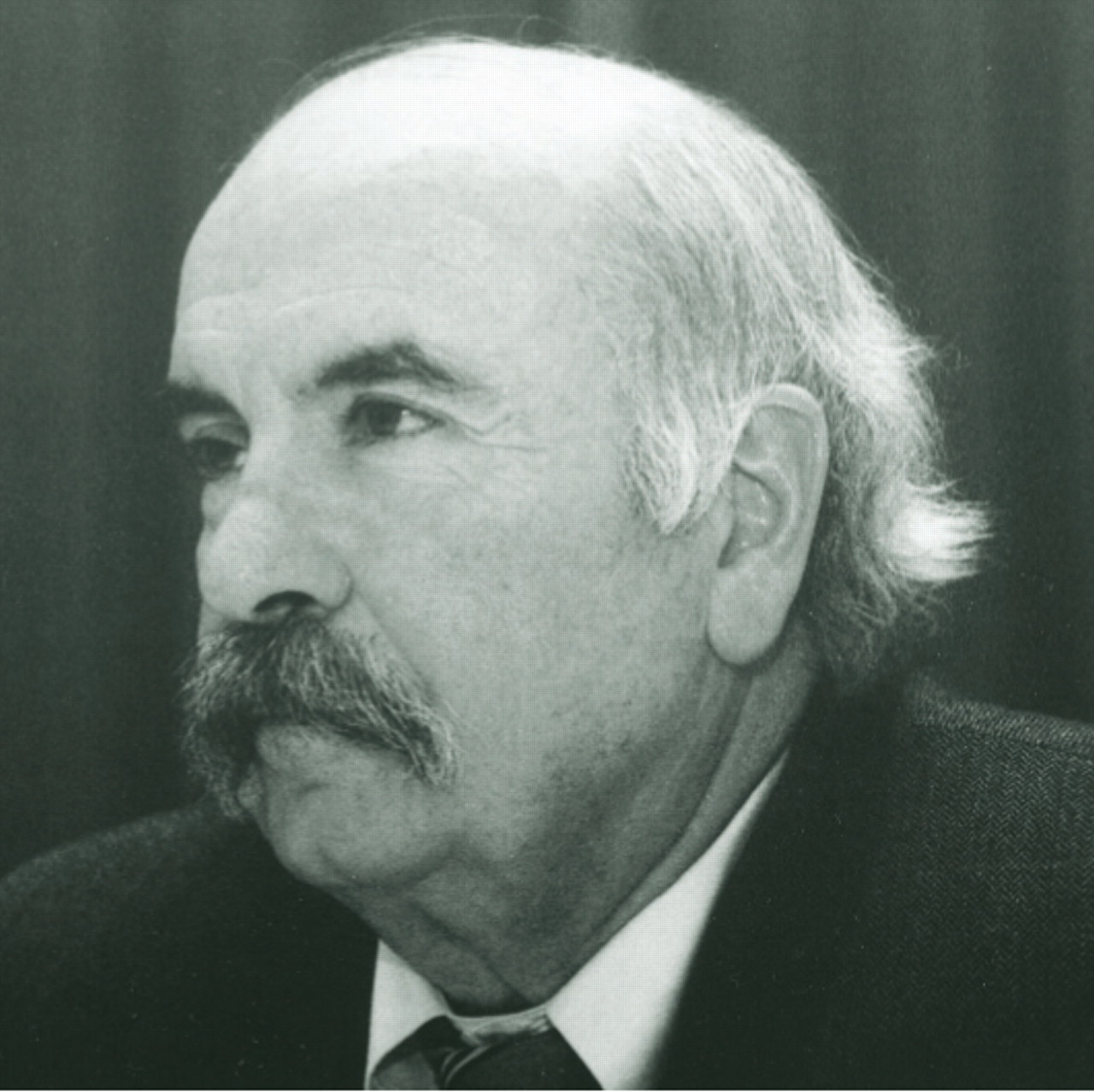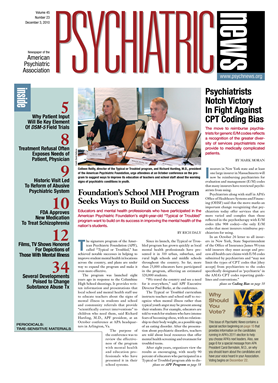On October 30, while thousands of Americans descended on Washington, D.C., to participate in a “sanity” rally, a small cadre of researchers sequestered themselves in a hotel nearby to tackle the challenge of getting effective treatment to Americans with “drinking and drugging problems,” as one of the researchers put it.
Their presentations and informal discussions at the conference titled “The New Frontier in Addiction Treatment: Evidence-Based Policy and Practice” revealed how daunting the challenge of getting effective treatment to people with substance abuse problems actually is.
Only 25 percent of individuals with an alcohol use disorder seek help, John McKellar, Ph.D., a clinical assistant professor of psychiatry at Stanford University, reported, while Paul Roman, Ph.D., a distinguished research professor of sociology at the University of Georgia, noted that “Many people have a deep romance with their substances and fear that if they go for treatment, they'll have to give them up.”
Even among those who pursue treatment, dropout rates are high, stated Laura Dietzen, M.A., director of data analysis at Polaris Health Directions in Fairless Hills, Pa. In a 2004 study that she and her colleagues conducted of 315 patients in substance abuse treatment, the dropout rate was 66 percent. “The definition of dropout was a note in the clinical record that the patient had quit treatment at any time,” Dietzen said. In a larger study of 1,500 such patients, which they conducted from 2003 to 2007, they found a dropout rate of 53 percent. “For this study, we looked at patients who dropped out within approximately 30 days of intake,” Dietzen said.
And even when people do get substance abuse treatment, relapse is unfortunately still the norm, David Farabee, Ph.D., a professor-in-residence of psychiatry at the University of California at Los Angeles, lamented.
Not Just an American Dilemma
And the dropout and relapse morass isn't just one that plagues the United States. It's occurring in other countries as well—for example, the Netherlands.
During the late 1990s, politicians in the Netherlands charged that substance abuse treatment services in their country were ineffective, and their outcry led to a nationwide treatment-reform program. One of the objectives was to offer evidence-based practices and a stepped-care model, which consists of matching patients to the intensity of treatment based on three characteristics—addiction severity, psychiatric impairment, and social stability.
Some 25,000 patients have gone through this retooled program since 2002. But is the program effective? Gerard Schippers, Ph.D., a professor of addictive behaviors and treatment evaluation at the University of Amsterdam, and colleagues conducted a study of some 600 alcoholic patients admitted for outpatient treatment in two addiction centers to find out.
Patients were assigned on the basis of a stepped-care protocol to brief cognitive-behavioral therapy (BCBT) or standard CBT (SCBT). Drinking behavior was assessed at nine months followup. In BCBT, only 59 percent completed treatment, and in SCBT, only 41 percent did. Moreover, at follow-up, only 25 percent had achieved abstinence.
Furthermore, there is a high turnover rate of providers in the substance abuse treatment field, Patrick Flynn, Ph.D., director of the Institute of Behavioral Research at Texas Christian University, noted.
In the United States, there is no national strategy for delivering substance abuse treatment, Flynn asserted. Before 1992, both substance abuse treatment research and clinical care were under the same federal roof. Since then, they have been under the aegis of two separate federal agencies—the National Institutes of Health for research and the Substance Abuse and Mental Health Services Administration (SAMSHA) for delivery of care. “So what we have here in the U.S. is an orchestra without a conductor.”
Some Good News Reported as Well
But the situation for substance abuse care isn't all dour, several conference speakers indicated.
It is the most transformative time that the substance abuse treatment field has ever seen due to the new health insurance reform law that is designed to provide 32 million uninsured Americans with health insurance, Deni Carise, Ph.D., declared. Carise is senior vice-president and chief clinical officer of Phoenix House, which encompasses more than 100 substance abuse treatment programs in 10 states. The new health insurance law—the Patient Protection and Affordable Care Act—states that insurance companies must offer substance abuse treatment, so those programs need to gear up to treat more patients than they do now, she said.
Robert Morrison, executive director of the National Association of State Alcohol and Drug Abuse Directors, concurred: “We see federal health [insurance] reform having a huge impact on [substance abuse] services.” The passage of universal health insurance in Maine, Massachusetts, and Vermont before the federal law was enacted increased demand for substance abuse treatment in those states, he said.
“We have a wealth of new substance abuse treatment knowledge out there waiting to be applied,” Flynn observed.
For example, Katherine Watkins, M.D., a psychiatrist and researcher at the Rand Corp. in Santa Monica, Calif., and colleagues conducted a study to see whether addiction counselors could achieve competence in delivering group CBT for depression to substance abuse patients who were also depressed. The study showed that these counselors were effective in providing such therapy, Watkins reported. Furthermore, patients who received the counselors' help not only engaged in significantly less alcohol and drug use by the end of the study, but were significantly less depressed by then as well. “The study was for three years, and we conducted three- and six-month follow-ups,” Watkins explained. “We finished data collection about a year ago.”
Dissemination Is Under Way
Efforts to disseminate evidence-based practices in the substance abuse treatment field are also under way. For instance, Randolph Muck, M.Ed., chief of the Targeted Populations Branch of SAMSHA's Center for Substance Abuse Treatment, and colleagues are training clinicians how to deliver evidence-based treatment to adolescents with substance abuse problems. After Muck and his colleagues have worked with clinicians intensively for three years, the clinicians should be able to replicate the treatment at their own site, Muck said.
Technology is likewise galvanizing substance abuse treatment.
For instance, Richard Rawson, Ph.D., associate director of the Semel Institute for Neuroscience and Human Behavior at the University of California at Los Angeles, and colleagues found, in a study in South Africa, that videoconferencing was an effective and economic way to train substance abuse treatment providers.
In another example of technology in service to substance abuse treatment, there is a Web-based program from the Netherlands called “Drinking Less” that offers the public a chance to assess their drinking habits and, if they are overdoing it, attempt to quit or cut down with the help of CBT and self-control techniques, McKellar reported. A randomized, controlled study conducted in 2003-2004 showed that individuals who had participated in the program drank significantly less a year later than did those who had not participated, he said.
During an 11-month period, more than 18,000 people visited the “Drinking Less” Web site, and 24 percent of them took part in its program, according to information available on the site.
“Developing more accessible interventions such as this one could expand the reach of treatment,” McKellar remarked.
Where to Go From Here?
But where should the substance abuse treatment field go from here?
“I think we are starting to view addiction care as a broader health issue than we used to, and thus we are more interested in bringing it into the medical care system,” Harold Perl, Ph.D., ventured. That's a positive shift, he believes. Perl is senior lead for behavioral research, dissemination, and training at the National Institute on Drug Abuse's Center for the Clinical Trials Network.
“If we're going to look at the larger picture, then let's also consider prevention,” one discussant proposed. “Maybe we should focus more on changing people's environments than on changing people themselves to reduce substance abuse and addiction.”
“That's a good point,” Perl said. “We cannot change individual behavior in isolation.”
Roman agreed, citing an example of how environment influences alcohol consumption at the University of Georgia. Back in the 1960s, Athens, the town where the university is located, was “dry” and had no bars. Today, there are 117 bars, and the University of Georgia was rated the fourth-biggest party school in the United States by the Princeton Review in 2009.
“I think the American way is to let the drinking or drugging environment blossom without any intervention, with a few exceptions, for example, stronger drinking and driving laws,” Roman declared.



